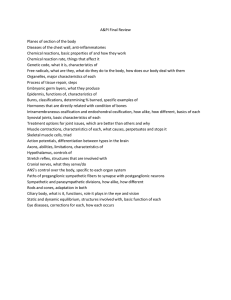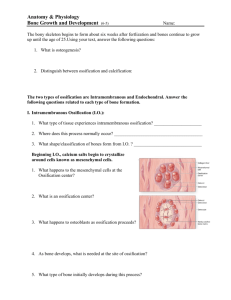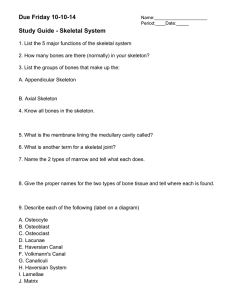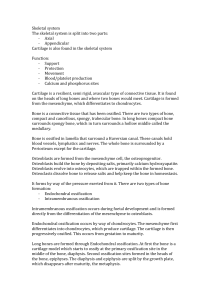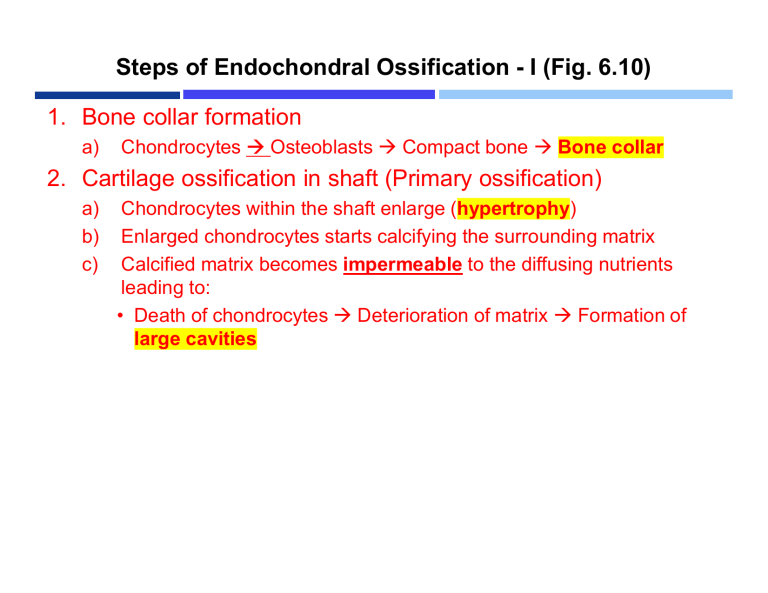
Steps of Endochondral Ossification - I (Fig. 6.10) 1. Bone collar formation a) Chondrocytes Osteoblasts Compact bone Bone collar 2. Cartilage ossification in shaft (Primary ossification) a) b) c) Chondrocytes within the shaft enlarge (hypertrophy) Enlarged chondrocytes starts calcifying the surrounding matrix Calcified matrix becomes impermeable to the diffusing nutrients leading to: • Death of chondrocytes Deterioration of matrix Formation of large cavities Steps of Endochondral Ossification - II (Fig. 6.10) 3. Periosteal bud invasion • Cavities are invaded by nearby periosteal bud containing: • Osteoclasts chew up some of the calcified matrix • Osteoblasts forms spongy bone 4. Medullary cavity formation • • Osteoclasts breakdown the newly formed spongy bone Causes medullary cavity in the center of shaft 5. Epiphyseal ossification (secondary ossification) • • Occurs shortly before or after birth Same events as primary ossification except: • Spongy bone is retained • No medullary cavity formation Steps of Intramembranous Ossification (Fig. 6.11) 1. Mesenchymal cells (embryonic tissue) clusters and differentiates into capillaries and osteoblasts ossification center 2. Osteoblasts secrets and calcifies osteoid (matrix) 3. Clusters of osteoid unite around the mesh of capillaries to form trabecular matrix Spongy bones 4. External surface condenses into periosteum 5. Spongy bone next to the periosteum remodels into compact bone

